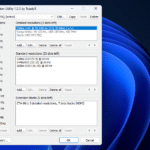An FPS meter (Frames Per Second meter) is a tool or display that measures and shows the frame rate of a video game, animation, or any real-time graphical application. Frame rate refers to how many individual frames (images) are rendered and displayed per second, which directly impacts the smoothness and responsiveness of visuals. Below is a comprehensive explanation of what an FPS meter is, how it works, its uses, and related details.
What is FPS?
Frames Per Second (FPS) is a unit that measures how many frames are displayed in one second.
Higher FPS results in smoother visuals, while lower FPS can make visuals appear choppy or laggy.
Common FPS benchmarks:
30 FPS: Minimum for playable gaming, but may feel sluggish.
60 FPS: Standard for smooth gaming and most modern displays.
120/144/240 FPS: High refresh rate for competitive gaming, requiring powerful hardware and compatible monitors.
FPS is influenced by hardware (CPU, GPU, RAM), software optimization, and display capabilities.










